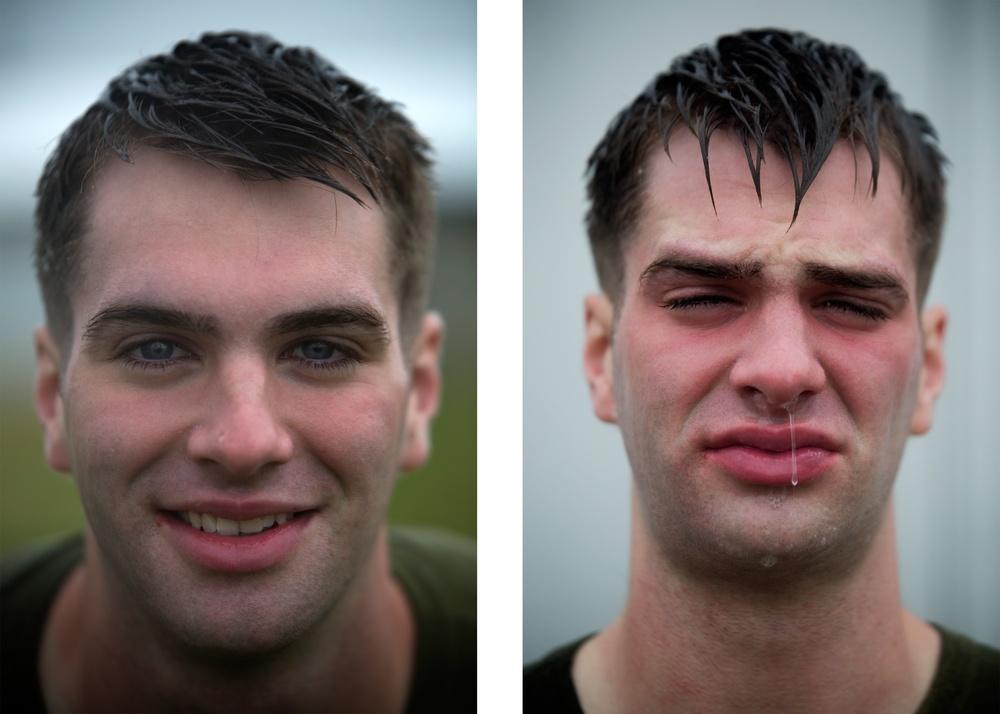Table of Contents
- The Immediate Effects of Pepper Spray on Eye Health
- Understanding Nasal Irritation and Respiratory Challenges
- Long Term Implications for Throat Mucosa and Voice Quality
- Effective First Aid and Recovery Strategies After Exposure
- In Summary
The Immediate Effects of Pepper Spray on Eye Health
Pepper spray triggers a swift and intense response when it makes contact with the eyes, primarily because of its active compound, capsaicin. Within seconds, affected individuals often experience severe burning sensations, profuse tearing, and involuntary blinking or eye closure as the body attempts to shield itself. This reaction serves as a natural defense mechanism, but it also means the eyes can become extremely sensitive to light, leading to discomfort and temporary visual disturbances. Additionally, the spray can cause swelling of the delicate tissues around the eyes, which may exacerbate symptoms and prolong recovery time.
From a physiological standpoint, capsaicin activates nerve endings in the cornea and conjunctiva, which send distress signals to the brain. This explains the rapid onset of pain and watering. In some cases, individuals might also experience blurred vision, redness, and a gritty feeling as though foreign particles are lodged in the eyes. While these effects are generally short-lived, immediate and proper rinsing of the eyes with clean water or saline is crucial to minimize irritation and prevent potential damage. Avoiding rubbing or touching the eyes is equally important to reduce the risk of further inflammation or injury.
- Intense burning and stinging sensations
- Excessive tearing and watering
- Reflexive eye closure and blinking
- Swelling and redness of eyelids and surrounding tissue
- Temporary blurred vision and light sensitivity
Understanding Nasal Irritation and Respiratory Challenges
Pepper spray’s active ingredient, capsaicin, triggers an intense inflammatory response when it comes into contact with the sensitive mucous membranes inside your nose. This reaction causes a sudden burning sensation, redness, and swelling that can make breathing through the nose difficult. The nasal passages become congested due to increased mucus production as the body attempts to flush out the irritant. This congestion not only creates discomfort but can also exacerbate pre-existing respiratory conditions, making it challenging to maintain normal airflow.
Beyond simple irritation, exposure to pepper spray can initiate a range of respiratory issues including:
- Coughing fits that attempt to clear the airway
- Wheezing caused by narrowed bronchial tubes
- Shortness of breath due to inflamed tissues and congestion
For individuals with asthma or chronic respiratory diseases, these effects can transform into more severe attacks, requiring immediate medical attention. Understanding these reactions is critical for both prevention and timely response after exposure.
Long Term Implications for Throat Mucosa and Voice Quality
Repeated or prolonged exposure to pepper spray can cause lasting damage to the delicate mucosal lining of the throat. This sensitive tissue, when inflamed or irritated over time, may develop chronic issues such as persistent soreness, difficulty swallowing, or a constant feeling of dryness. Scar tissue formation is another potential consequence, which can reduce the elasticity of the throat, leading to discomfort or even airway narrowing in severe cases. Individuals who rely heavily on their vocal cords for work, such as singers, teachers, or public speakers, might experience a decline in voice quality due to this ongoing irritation and damage.
Moreover, the voice itself can undergo subtle but significant changes, including hoarseness, reduced vocal range, and a diminished ability to project sound. These effects stem from both inflammation of the vocal cords and alterations in the throat’s protective lining. It’s important to note that while occasional exposure typically causes temporary symptoms, chronic exposure may necessitate medical intervention and voice therapy. To protect long-term throat health, minimizing contact with irritants like pepper spray and seeking prompt treatment after exposure are essential steps.
- Possible long-term symptoms: chronic throat pain, hoarseness, vocal fatigue
- Risk factors: repeated exposure, underlying respiratory conditions
- Prevention tips: use protective gear, avoid unnecessary exposure
Effective First Aid and Recovery Strategies After Exposure
Immediately after exposure to pepper spray, the primary goal is to minimize the chemical’s contact with sensitive tissues. Flush the affected areas with copious amounts of cool water-this helps dilute and wash away the irritant. Avoid using hot water, as it can exacerbate irritation and swelling. For the eyes, gently hold them open while rinsing to ensure the spray is fully removed. Resist rubbing your eyes, nose, or throat, as it can worsen inflammation or spread the pepper spray further. If water isn’t available, a saline solution or a specialized eye wash can be effective alternatives for ocular exposure.
Once initial flushing is complete, focus on recovery by creating a comfortable environment. Stay in a calm, well-ventilated space and avoid exposure to smoke, dust, or other airborne irritants which can prolong throat and nasal discomfort. Using a cold compress can help reduce swelling around the eyes and cheeks. Over-the-counter pain relievers and antihistamines may ease discomfort, but always consult a healthcare professional if symptoms persist beyond 24 hours or if you experience severe breathing difficulties. Quick response combined with proper aftercare significantly accelerates recovery and reduces the risk of complications.
- Do not wear contact lenses until irritation fully subsides.
- Avoid smoking or inhaling strong fumes during recovery.
- Keep hydrated to soothe throat irritation.
- Seek immediate medical attention if there is persistent vision loss or difficulty breathing.
In Summary
In summary, understanding how pepper spray affects your eyes, nose, and throat is crucial not only for safe handling but also for effective response if you or someone nearby is exposed. While it serves as a powerful self-defense tool, its intense irritation underscores the importance of using it responsibly and knowing how to minimize discomfort and potential harm. By being informed about the physiological impacts and proper first aid measures, you can better protect yourself and others in situations where pepper spray becomes necessary. Stay safe and stay prepared.Check Our Other Blogs
- StunGun – Your Trusted Source for Stun Guns, Laws, and Self-Defense Tips
- PepperSprayLaws – Your Trusted Resource for Pepper Spray Information
- StunGunLaws – Your Trusted Guide to Stun Gun Legality and Safety




